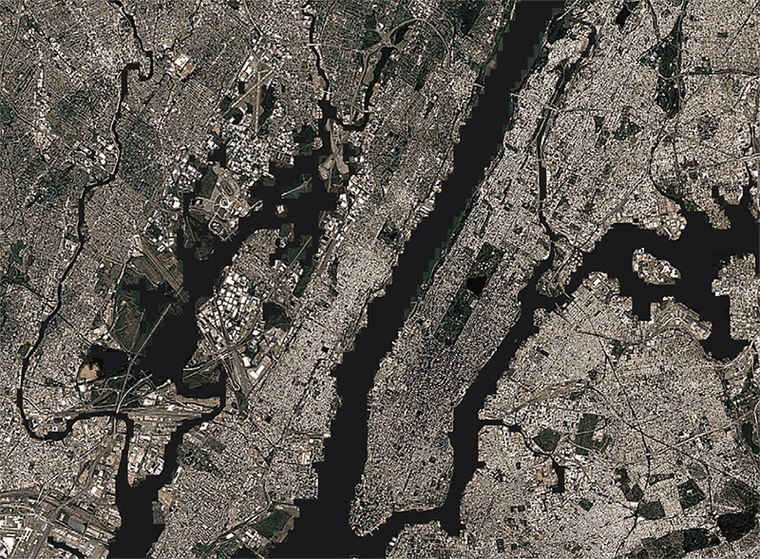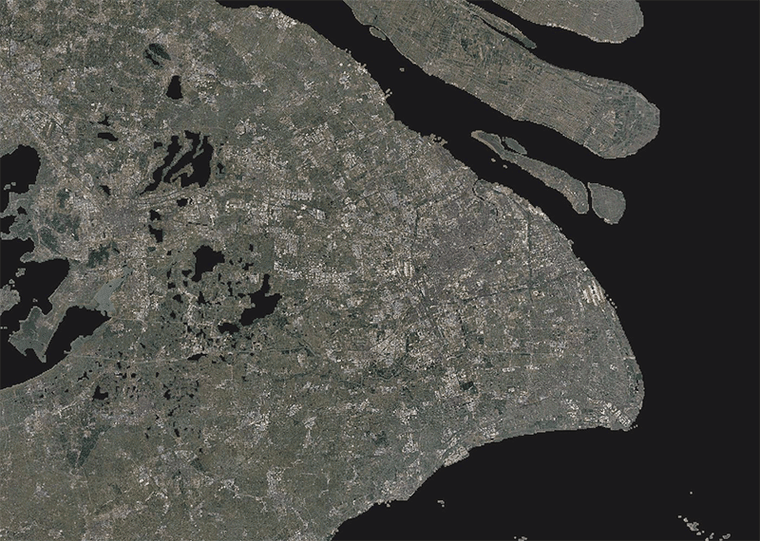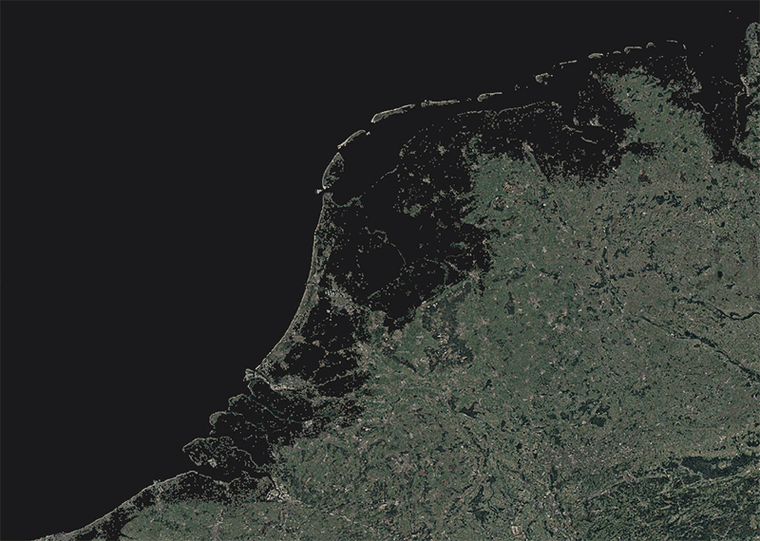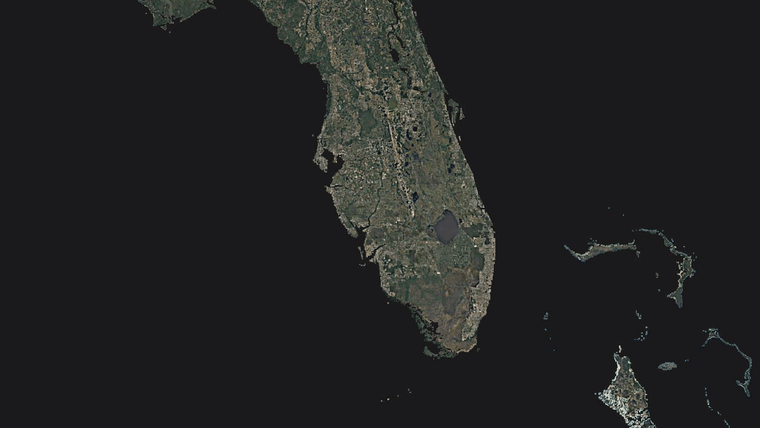It’s one thing to read about rising sea levels — quite another to watch as rising seas inundate low-lying regions to reshape familiar coastlines.
That’s just what you can do with EarthTime, a new online tool that blends satellite photos of Earth with data from university research programs, government agencies, and nongovernmental organizations to create eye-popping animations showing how seas rise in tandem with temperatures to swallow up low-lying areas.
It’s not a pretty picture.
“Sea level rise is a profound threat,” Michael Mann, director of the Penn State Earth System Science Center and a noted expert on the effects of climate change, told NBC News MACH in an email. “Globally, as many as 650 million people live on land that will be submerged or exposed to chronic flooding by 2100 given business-as-usual burning of fossil fuels and sea level rise of 6-8 feet.”
Created by scientists at Carnegie Mellon University in Pittsburgh, EarthTime has long been used by the World Economic Forum but was just made available on the web. The tool shows other forms of environmental despoliation, including deforestation, coral bleaching, night fires, and glacier depletion as well as sea level rise.
Sea levels are rising because huge sheets of ice that have long been perched atop land masses, especially Antarctica and Greenland, are melting as global temperatures rise. As the ice melts, water flows into the world’s oceans. The effect on sea levels is compounded by the fact that seawater expands with rising temperatures.
Currently, sea levels are rising at a rate of roughly 3 millimeters per year.
The EarthTime animations start at the current average global temperature of roughly 12.7 degrees Celsius and show what will happen if the average temperature rises to 16.7 degrees C.
The Paris Climate Accord aims to keep global temperature rise below 2 degrees C above the pre-industrial average of 12 degrees C — but we’ve already surpassed that mark. Many scientists believe we're on track to rise 3 degrees C by the end of this century.
EarthTime spotlights the effects of rising seas on major urban areas including Mumbai and London, but risks are even greater for islands like Tahiti, Tuvalu, and Kiribati. In the U.S., New York City, Charleston, and several cities in Florida are among the metropolitan areas where the effects of rising seas are expected to be especially dramatic.
Of the top 25 American cities most vulnerable to coastal flooding, 22 are in Florida (see gif at top). Flooding could destroy Florida’s coral reefs, mangrove swamps, and beaches. The risks to coastal areas in the state are exacerbated by the continuing erosion of the seafloor off Florida’s coasts.
Here are three other places where familiar coastlines are likely to be reshaped by rising seas.
New York City

There are more residents living in high-risk flood zones in New York City than in any other U.S. city. Sea level rise will contribute to more intense and more frequent hurricanes because the storms will start from a higher level.
Shanghai

Shanghai has been working on responses to sea level rise for years since flooding poses a threat to its fishing, financial, and tourism industries. But experts caution that building a floodgate on the Yangtze River — one proposed solution — may not help protect the city against sea level rise in the long term.
The Netherlands

More than a quarter of the Netherlands is below sea level, putting it at a high risk for flooding. While a storm surge barrier the size of two Eiffel Towers protects Rotterdam, the Dutch government has responded with innovations beyond just building walls. For instance, there are floating conference centers, houses, and trees in some major Dutch cities.

